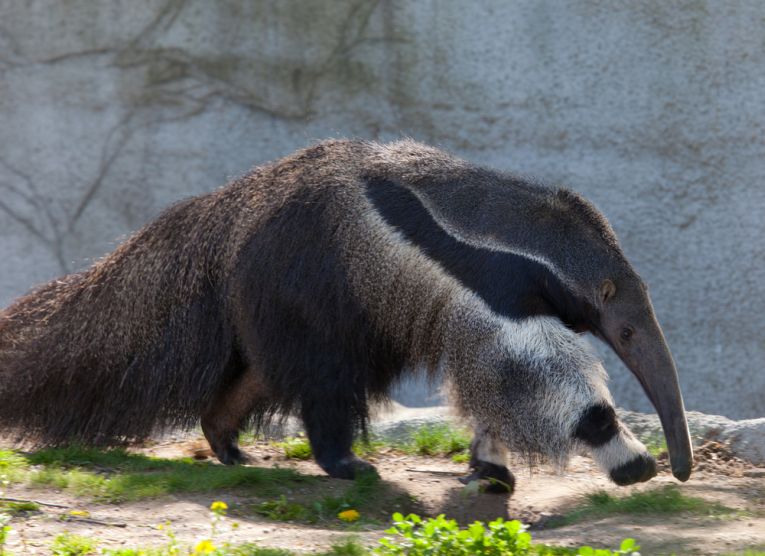After the disgrace of near-extinction for Tolypeutes tricinctus , Brazil's world Cup armadillo mascot, there have been several stories about the giant ant eater. This magnificent, tall mammal (7 feet or 217cm on its hind legs) is down to 5000 individuals and classed as Vulnerable as it's losing much of its habitat fast. South America would do well to look closely at large animals that ecotourists will pay to see in the wild. We have more on some Amazonian diversity, including the giant ant eater in - Amazonian Diversity.
There are no apes, elephants or obvious big cats for tourists, unless they go to great lengths to view a glimpse of a jaguar. The Myrmecophaga tridactyla ant eater is spectacular, viewable and has a dangerous side. When the daggers it has for front claws are used on ant-hills, the damage is obvious. If you want your femoral or other arteries opened up, then goad an ant eater to attack you. As any zoo keeper of this lovely species will tell you, they are easily frightened and must be kept at a distance.
Hunters have been attacked and killed on at least 2 occasions, despite the docile nature of the species. Superstitious people in several countries tend to attack this species, and must be told they should suffer the most severe penalties. Then more than simple bad luck would threaten them when in fact it is thee incomers who are bringing death and destruction to the giant ant eater and its young.
Species like these worldwide have the inevitable spread of human settlement to deal with. As loggers log valuable timber and planters plant their oil palm, their wives and children eventually follow. The homesteading grows into villages and towns, in the middle of the most valuable habitats for other species. All the life we love is threatened by this random development. The rules we dislike making have to be made.
Similar species to the giant ant eater are the tamanduas (2) and the silky ant eater, but many animals have these problems. Any tiger could tell you how harassed they are , especially in overcrowded India. The elephant is sought for its ivory, mainly by the Far East market. Asian elephant have always been robbed of their young for domestication too, leaving the mothers with a hared of humans. Now we know how few elephants are left!
Smaller creatures are hunted too, of course, but the simple habitat loss causes conflict with snake species that would never see people or even attack without great provocation. Insect and other arboreal species lose forest canopy and other habitat on a daily basis, so we are rapidly losing all those flying squirrels, monkeys and "undiscovered" beetles and moths that we seem to ogle when we do find them!
Ease off the hunting, guys. We want these diverse creatures alive, so get paid for conserving them, not destroying your future income.










